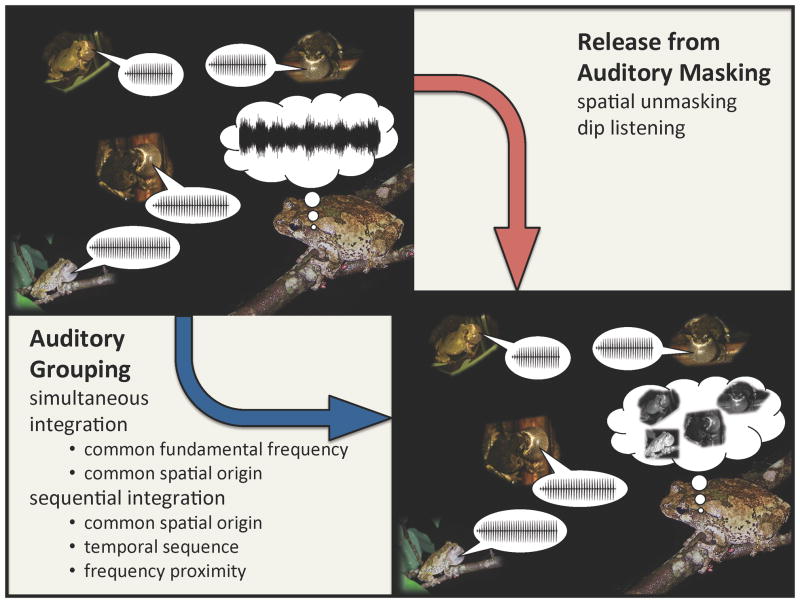Figure 1.
Two components of sound source perception in frogs. The basic auditory problem that frogs encounter in natural social aggregations (depicted in the upper left) is that all of the sound pressure waves produced by individual calling males in a chorus add together to form a single, composite sound pressure waveform. This is a general problem in hearing, and it is a specific biological analogue of the human “cocktail party problem” [2]. It is the composite waveform that impinges on the frog’s body and sets the tympana into motion. In order to make sense of the complex acoustic scenes typical of breeding choruses, a listening frog’s auditory system must decompose this composite waveform to create coherent percepts that correspond to individual calling males as distinct sound sources in the environment (depicted in the lower right). Two challenges emerge from this general problem, one related to auditory masking and the other related to auditory grouping. Behavioral and physiological studies of frogs indicate they may overcome these two challenges by exploiting some of the same features of the acoustic scene that enable humans to understand speech under cocktail-party-like listening conditions. Frogs can experience significant release from auditory masking by exploiting spatial separation between signals and noise and by “listening in the dips” of the natural fluctuations that are present in the level of natural chorus noise. Frogs also appear to integrate simultaneous spectral components and temporally separated sound elements using well-known auditory grouping cues related to commonalities shared by the sound elements produced by a single source.

